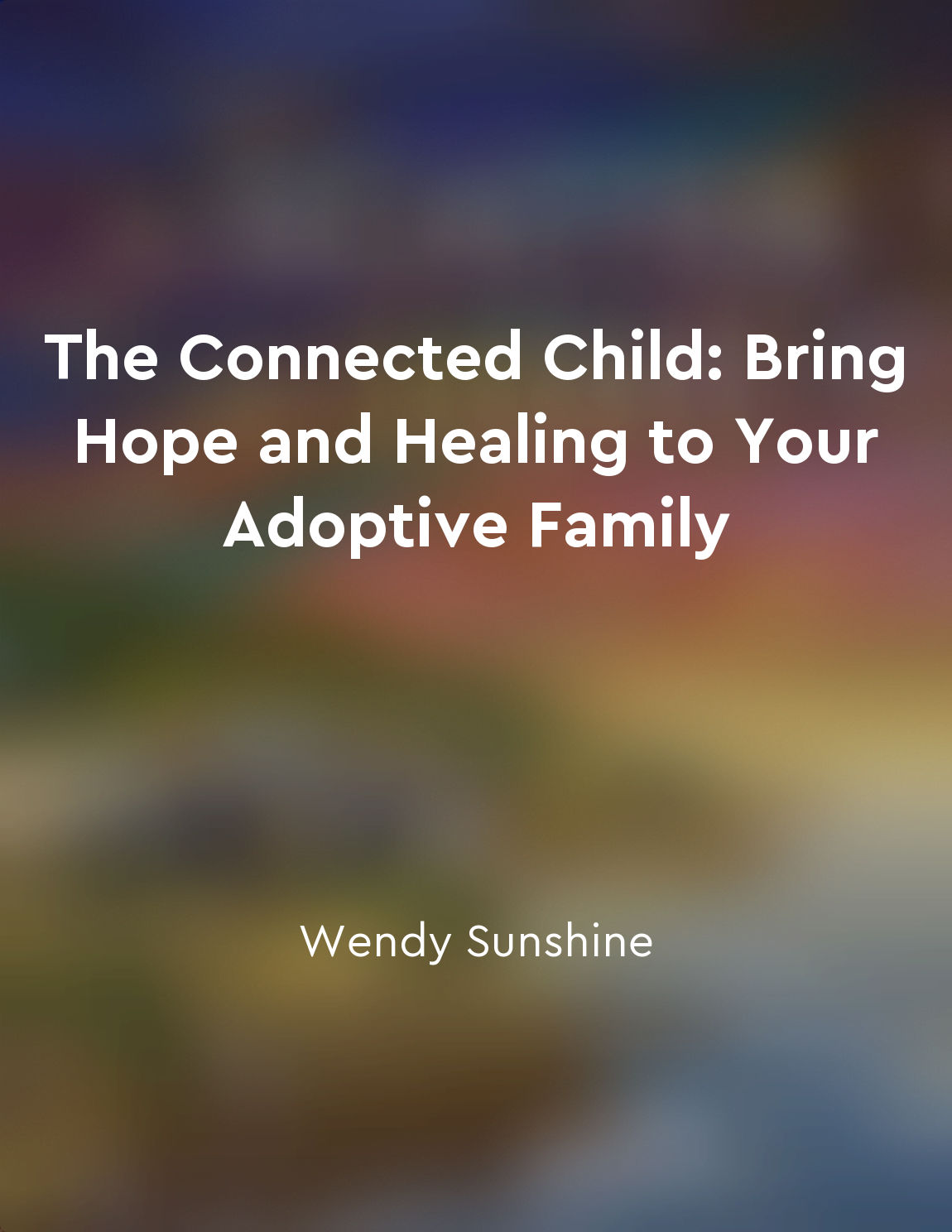Connecting with others is vital for healing from trauma from "summary" of The Body Keeps the Score by Bessel van der Kolk, M.D.
The essence of healing from trauma lies in our ability to connect with others. This fundamental truth is rooted in our biology and psychology. When we experience trauma, our bodies and minds become stuck in a state of hyperarousal, making it difficult to regulate our emotions and connect with others. However, by engaging in meaningful relationships, we can begin to repair the damage caused by trauma. Connecting with others provides us with a sense of safety and security, which is essential for healing. When we feel understood and supported by those around us, our nervous systems can begin to relax, allowing us to process and integrate our traumatic experiences. This process is known as co-regulation, where our bodies sync up with others through shared experiences and emotions. Furthermore, connecting with others helps us to reframe our traumatic experiences and make sense of what has happened to us. By sharing our stories with others who empathize with our pain, we can begin to create a coherent narrative of our past. This process of storytelling is crucial for integrating our traumatic memories and moving forward with our lives. In addition, connecting with others allows us to experience the healing power of attachment. When we form secure attachments with others, we can cultivate a sense of trust and intimacy that helps us to heal from the wounds of trauma. These deep connections provide us with a sense of belonging and acceptance, which is essential for building resilience and fostering emotional well-being.- The journey towards healing from trauma is a relational one. By connecting with others in a safe and supportive environment, we can begin to repair the broken parts of ourselves and reclaim our sense of agency and autonomy. Through the power of human connection, we can transcend our traumatic past and create a brighter future for ourselves and those around us.
Similar Posts
Energy follows thought
When you have a thought, you create an electrical impulse in your brain. This impulse produces a measurable frequency that can ...
Letting go of toxic relationships
Letting go of toxic relationships isn't just about cutting someone out and moving on. It's about acknowledging the impact they'...
Shame can be a heavy burden to bear
Shame, as depicted in 'The Fact of a Body' by Alexandria Marzano-Lesnevich, is not merely a fleeting emotion that comes and goe...
The amygdala is responsible for the fight, flight, or freeze response
The amygdala, located deep in the brain's limbic system, is a small almond-shaped cluster of nuclei that plays a crucial role i...
Overcoming obstacles and finding hope in the darkness
Patty Duke's 'Brilliant Madness' delves into the depths of mental illness and the struggle to find light in the midst of darkne...
Loss leads to introspection
Loss, in its many forms, has the power to force individuals to confront themselves, their lives, and their beliefs in ways they...
Surrender to the process of growth
To surrender to the process of growth means to let go of resistance and allow yourself to evolve naturally. It involves releasi...

Building trust takes time
Building trust with a child who has experienced trauma is a process that cannot be rushed. It requires patience, consistency, a...
We are capable of greatness in the face of adversity
In the midst of suffering and adversity, one might wonder whether greatness is even possible. Is it possible for humans to rise...
Abusers may deny or minimize their abusive behavior
Abusers may deny or minimize their abusive behavior. This is a common tactic used by abusers to avoid taking responsibility for...

